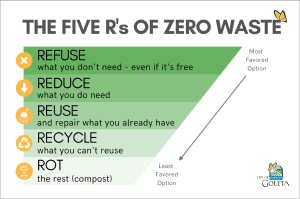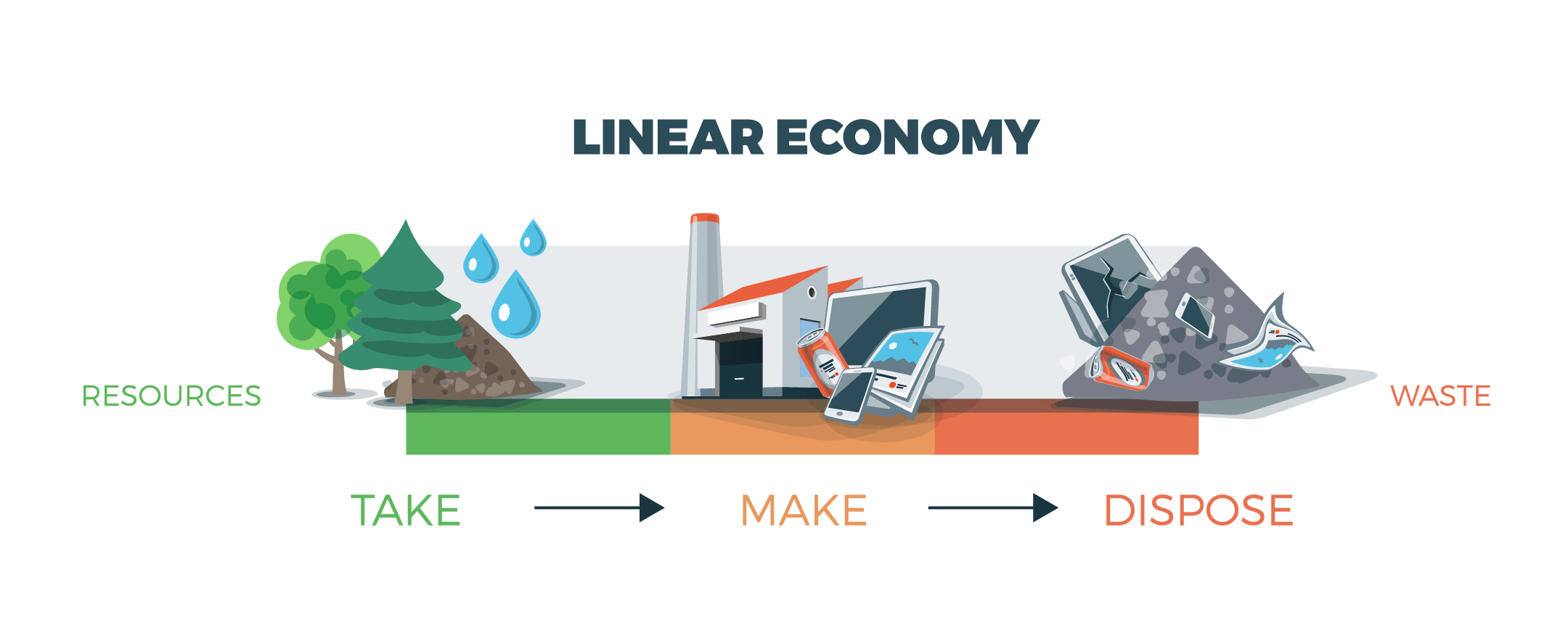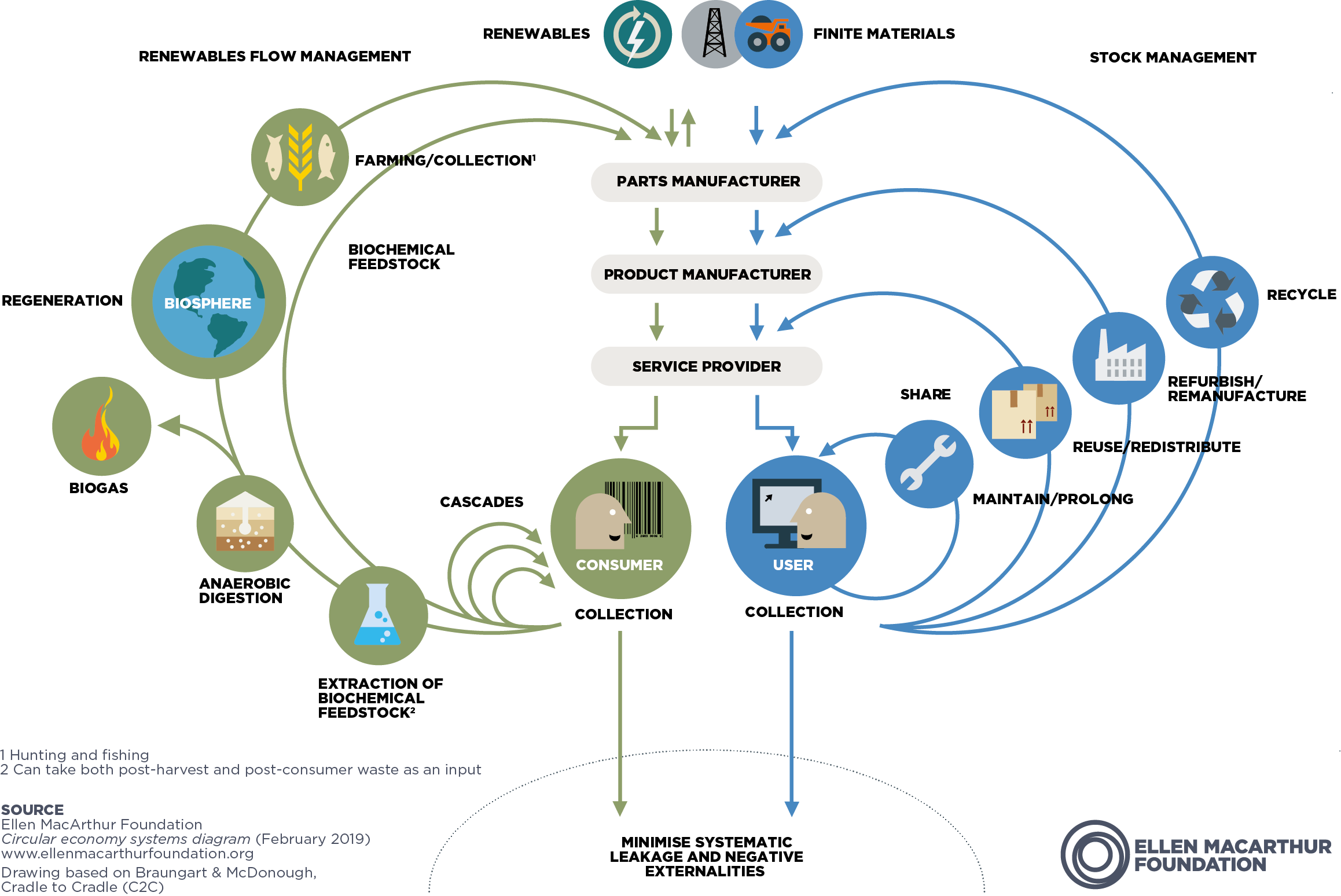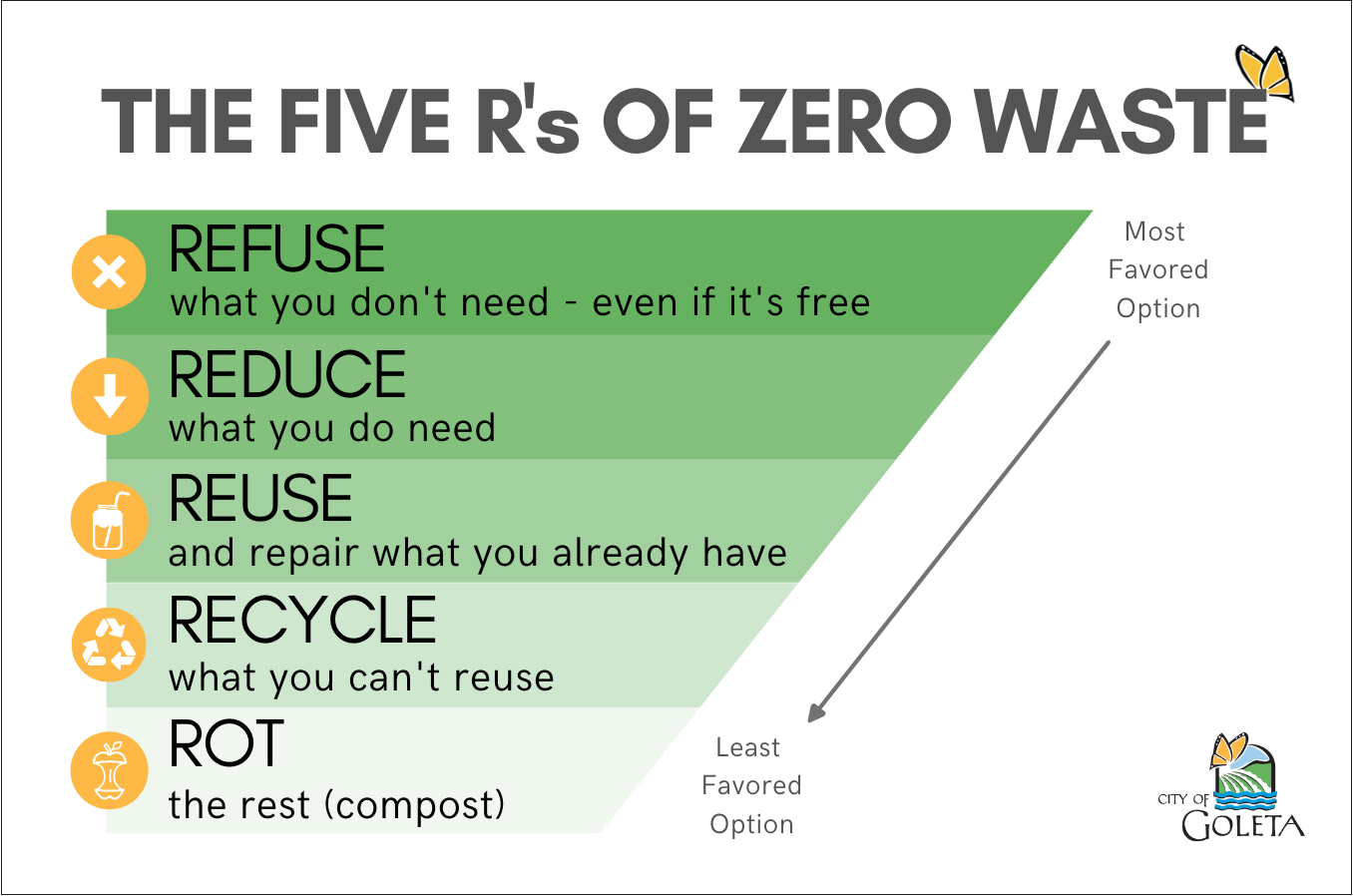
Goleta is a community that cares deeply about reducing waste and its impact on the environment. To help our community achieve this goal, we can all contribute by learning more about Zero Waste and making changes in our day to day lives. Please read on to learn more about what Zero Waste really means, and stay tuned for future articles that will highlight Zero Waste lifestyle choices and tips in alignment with The Five R’s of Zero Waste.
What does Zero Waste really mean?
Zero Waste is defined in slightly different ways between businesses, governments, and non-profits. The most important thing to remember though is that even among these different groups, Zero Waste is never meant as “no trash ever”. Instead, Zero Waste can be thought of as a philosophy and a goal.
As a philosophy, Zero Waste starts at the design phase of a product by considering what every step of that item’s lifecycle will be. Usually, this lifecycle has a clear start and finish, otherwise known as being cradle-to-grave. This lifecycle, called a linear economy, is the way our products have been made since the Industrial Revolution over 200 years ago.

A diagram of a linear economy: resources are gathered, products are made, and the waste is disposed of. Image Source Rochester Institute of Technology
But, by keeping a Zero Waste philosophy in mind, companies can create a loop where waste from one product is used as a resource for something else, also known as cradle-to-cradle. In this circular economy, the lifecycle of a product never really ends. Instead, when a product’s life is over, it just joins a new item’s cycle. This drastically cuts down on the amount of trash the gets sent to landfills or that winds up polluting our streams, oceans, and communities.

A diagram of a circular economy: waste and pollution is eliminated, products and materials are circulated, and nature is regenerated. Image Source Ellen Macarthur Foundation
As a goal, the amount of trash that needs to be redirected from landfills (either by reusing it or not creating it in the first place) depends on the need and capacity of local communities. As a general rule of thumb, the Zero Waste International Alliance considers a 90% reduction of trash to be reasonable and reachable goal.
To help reach these goals, there are personal Zero Waste philosophies that can be followed in our day-to-day lives. These are commonly known as The Five R’s of Zero Waste.
The Five R’s (Refuse, Reduce, Reuse, Recycle, Rot) are listed in order from the most favored option (refuse) to the last resort (composting). This idea was made popular by Bea Johnson’s book Zero Waste Home and is similar to a classic American saying from WWII: “Use it up, wear it out, make it do, or do without!”

The Five R’s of Zero Waste: Refuse what you don’t need, even if it’s free. Reduce what you do need. Reuse and repair what you already have. Recycle what you can’t reuse. Rot (compost) the rest.
How do we get to Zero Waste in our communities?
Shifting from a linear to a circular economy is a huge change that will take time and cooperation between governments, businesses, organizations, and communities. However, we are already on the path thanks to strategies such as Extended Producer Responsibility (EPR), also known as Product Stewardship. Normally, once a product is made and sold it is up to stores and consumers to handle the waste. This can be especially difficult with electronics, furniture, hazardous chemicals, and many other items that are not easy to properly throw away or recycle. EPR policies help with this disposal difficulty by having the producers of these items pay for the collection, sorting, and recycling of their products.
EPR started in the European Union with disposal systems for electronics, batteries, and cars, but it is also becoming a more common strategy in the US. California has EPR programs for paint, mattresses, carpet, mercury thermostats, pesticide containers, and it was the first state to pass stewardship laws for pharmaceuticals and sharps waste.
Stay tuned for future articles about how you can help Goleta achieve Zero Waste. For now, check out some things you can start right now to get to Zero Waste in your home.


